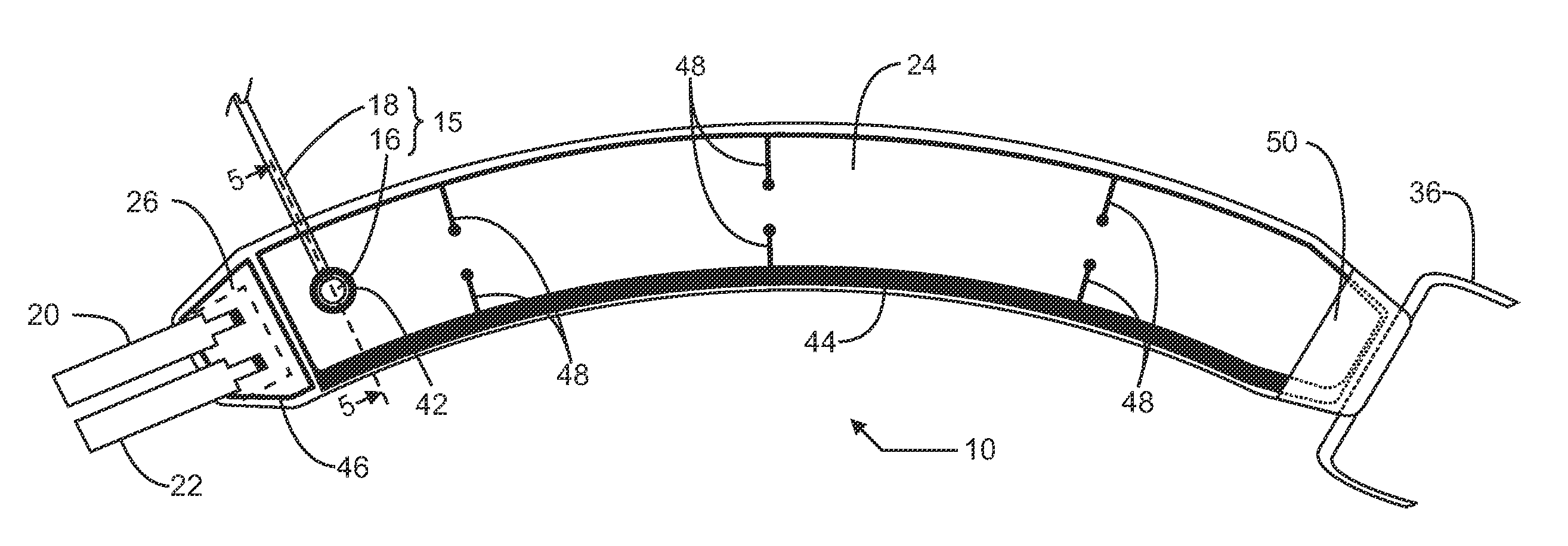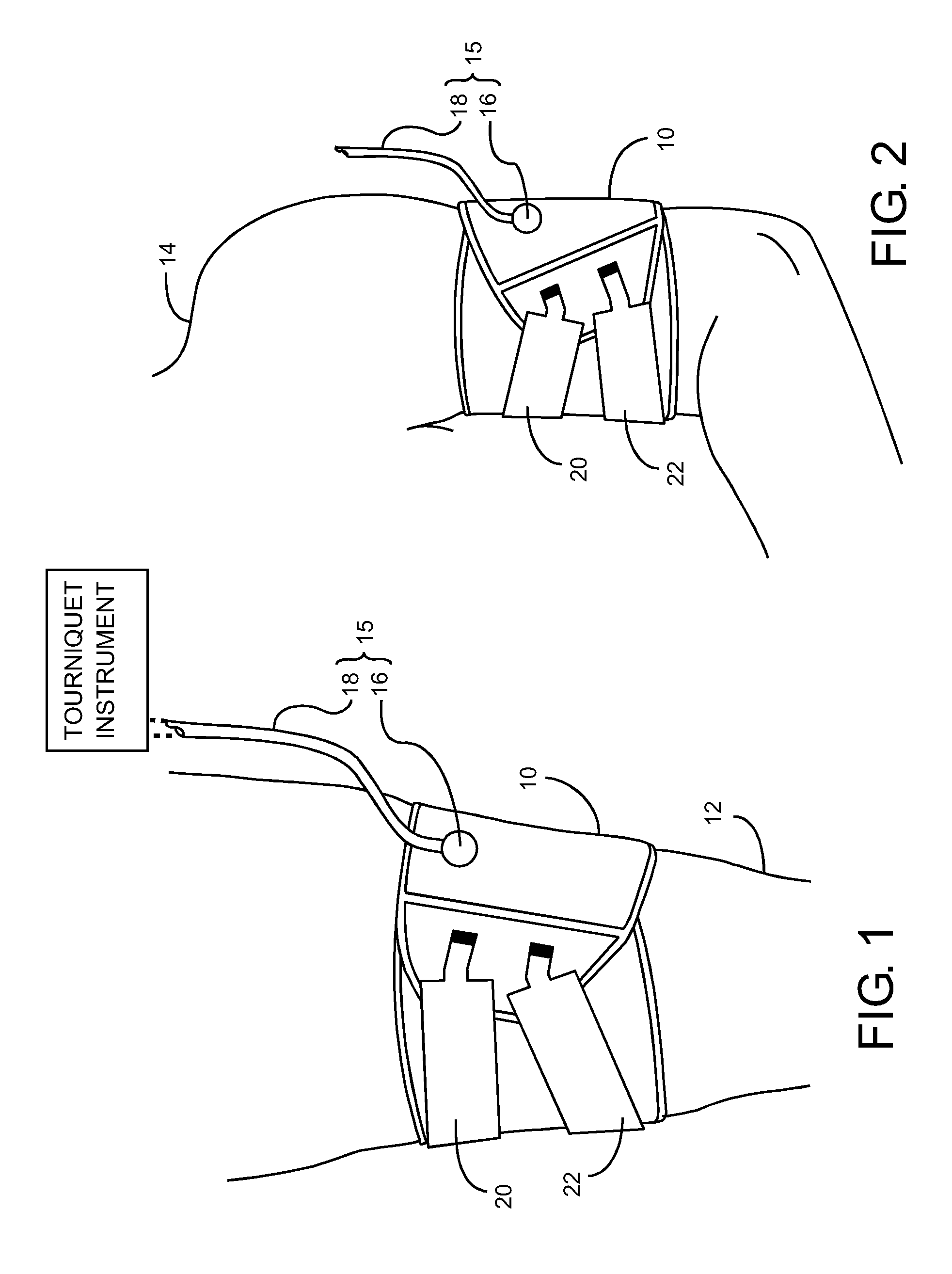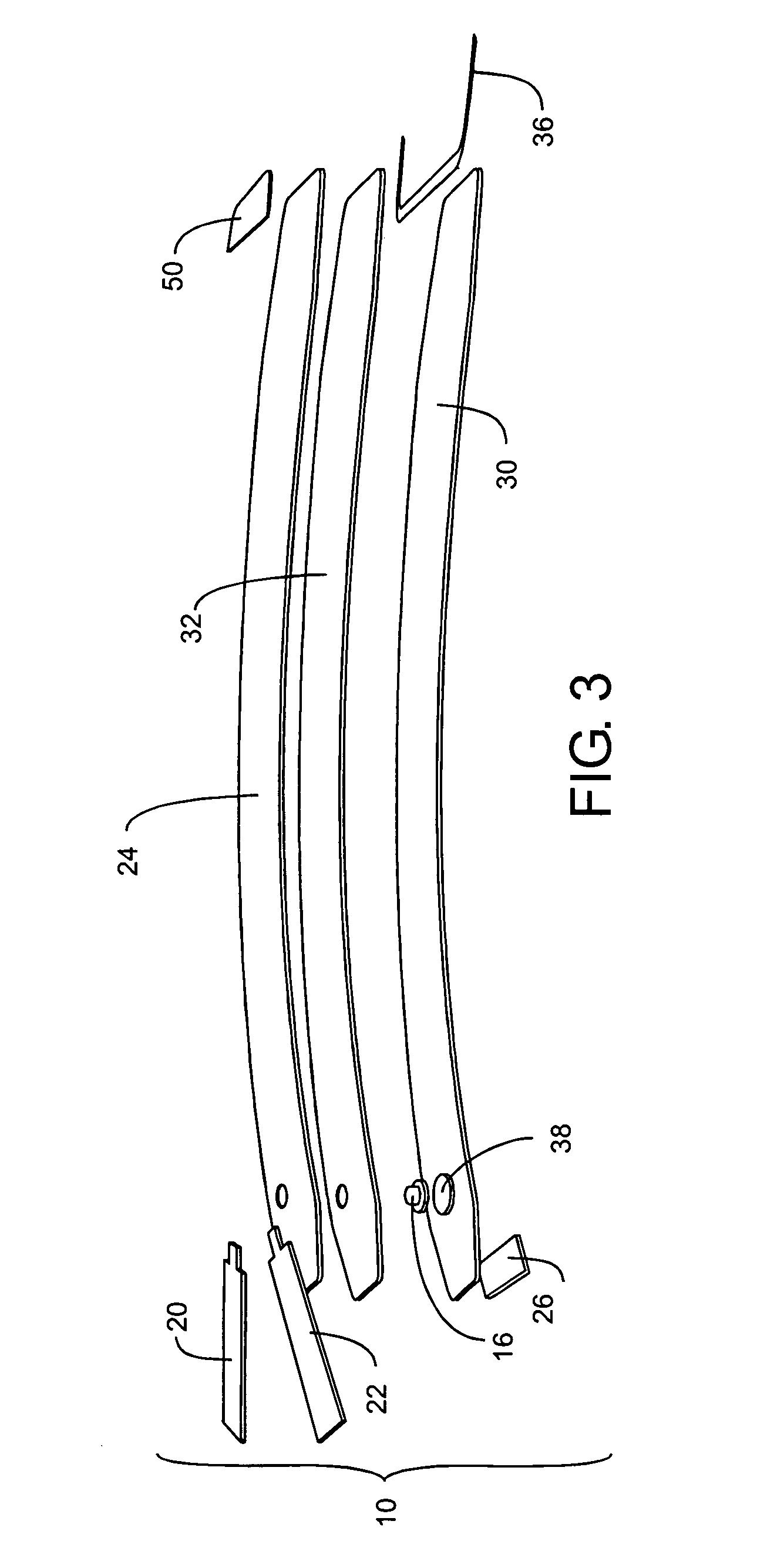Low-cost contour cuff for surgical tourniquet systems
a tourniquet and low-cost technology, applied in the field of pneumatic tourniquet cuffs, can solve the problems of proximal and distal snug fit, substantially higher and more hazardous inflation, and tendency to roll or slide distally on the limb
- Summary
- Abstract
- Description
- Claims
- Application Information
AI Technical Summary
Benefits of technology
Problems solved by technology
Method used
Image
Examples
Embodiment Construction
[0013]FIG. 1 shows the preferred embodiment in a surgical application and depicts contour tourniquet cuff 10 secured circumferentially around a tapered patient limb 12. FIG. 2 depicts contour cuff 10 secured circumferentially around a substantially cylindrically shaped patient limb 14.
[0014]Referring to FIG. 1, the inflatable portion of contour tourniquet cuff 10 completely encircles patient limb 12 and is inflated by a source of pressurized gas to a pressure that will occlude the flow of arterial blood in patient limb 12 distal to cuff 10. Cuff port 15 is comprised of port inlet 16 and tubing 18 and provides a gas tight pneumatic passageway to the inflatable portion of cuff 10. Tubing 18 is made from flexible thermoplastic tubing and is permanently bonded to port inlet 16. Tubing 18 is fitted with a suitable connector (not shown) to permit attachment to a tourniquet instrument such as that described by McEwen et al. in U.S. patent application Ser. No. 11 / 122,600, for the inflation ...
PUM
 Login to View More
Login to View More Abstract
Description
Claims
Application Information
 Login to View More
Login to View More - R&D
- Intellectual Property
- Life Sciences
- Materials
- Tech Scout
- Unparalleled Data Quality
- Higher Quality Content
- 60% Fewer Hallucinations
Browse by: Latest US Patents, China's latest patents, Technical Efficacy Thesaurus, Application Domain, Technology Topic, Popular Technical Reports.
© 2025 PatSnap. All rights reserved.Legal|Privacy policy|Modern Slavery Act Transparency Statement|Sitemap|About US| Contact US: help@patsnap.com



